How To Mix Quikrete Concrete?
Important Point
There are only a few simple tools you’ll need to mix Quikrete concrete by hand. The ingredients for concrete are pre-measured and pre-added to premixed Quikrete bags. So, unless you want a different kind of concrete, you don’t need to add anything to the concrete mix.
Mixing in various additives can speed up the concrete’s curing time, alter its color, or increase its strength. In the next sections, we’ll elaborate on these points. Quikrete concrete can be mixed in a tray or other suitable mixing container.
A shovel or trowel would suffice for mixing it. As well as the water. The typical ratio for mixing an 80-pound bag is 3 quarts of water. Concrete that has been properly mixed should have the consistency of thick oatmeal.
Machine mixing is another option for Quikrete. Concrete mixer daily rentals at Home Depot cost about $50. In a large mixing drum, combine your concrete ingredients with water. It really is that easy.
Concrete can be mixed easily, but getting it to the appropriate consistency can be tricky. The final look of your concrete should resemble thick oatmeal. It ought to be manageable in the hand, and could be rolled into a snowball if necessary.
When it comes to mixing concrete, water is the most crucial ingredient. If you overwater concrete, it will become weak, brittle, and more likely to shatter. In order to prevent the concrete from becoming soupy, a dry mix must be added.
Also Read: Choosing the Best Concrete Mix for Fence Posts: A Comprehensive Guide
Useful Article for You
- How Much Does a Yard of Concrete Weigh
- How Tall Is a Door
- How Many Stairs in a Flight
- How Many Bags of Concrete in a Yard
- How to Get Burnt Smell Out of Microwave
- How Far Apart Should Fence Posts Be
- How Many People Died Building the Great Wall of China
- How to Draw House
- How to Build a Lean to Roof
- How Many Bags of Concrete for 1 Yard
- How Much Does Cinder Block Cost
- How to Get a House for Free
- How Much Does It Cost to Soundproof a Room
- How to Read a Measuring Tape in Meters
- How to Mount a TV on a Brick Wall
- Step Foundation
- How Many Brick Are in a Cube
- How Is Transported Soil Different from Residual Soil
- How to Use Washers
- How to Find Wall load
- How To Install A Welded Wire Fence
Tools Required To Mix Quikrete Concrete
Quikrete concrete can be mixed with minimal effort and only a few inexpensive necessities. This is especially true of handiwork.
- Bucket. To hold and transport your water supply.
- Container for Blending. Get one that can hold several bags at once.
- Tool: whether it be a shovel, hoe, or trowel, for digging. With which to combine the concrete.
- Wheelbarrow. In lieu of a tray, generally, the wheelbarrow is used for mixing. Particularly if the concrete has been relocated. One can also benefit from the use of a wheelbarrow when pouring concrete into a hole.
- Protective gear. Though mixing concrete isn’t inherently dangerous, it’s nevertheless smart to wear protective gear. Avoid breathing the concrete dust by donning a mask. Always wear goggles because you don’t want any of the concrete, unmixed or otherwise, to get into your eyes. Waterproof gloves should be worn when working with concrete because of the risk of skin dryness and cracking.
- Concreting Equipment Mixer. Don’t want to mix concrete by hand? Then get yourself a drum mixer, either to rent or to buy.
- Knife. The bags can be opened with a tool knife.
Safety First
No matter what kind of building you’re putting up or fixing up, safety should always be your top priority. And while mixing concrete is a reasonably safe thing to perform, there are still certain measures you may take.
Wear goggles and gloves made of rubber to keep your eyes and hands safe from the cement. Concrete can severely dry and fracture the skin, and it is best to avoid getting any of it in your eyes. Wear a mask to prevent breathing in the concrete dust.
The amount of dust produced while pouring out a bag of ready-mixed concrete may come as a surprise to those who have never done so before. You should also exercise caution when moving the bags and working with the concrete.
You should take care when lifting these 80-pound sacks, even if you’re in good shape and used to working with concrete. Without proper lifting technique, even the lighter 60 kg bags can cause serious back injuries.
Wear protective eyewear and waterproof gloves whenever handling cement-based products like Quikrete Concrete. Also, if you’re pouring dry concrete into a tray, wheelbarrow, or mixer, you should probably protect your lungs by using a mask. Furthermore, be cautious when lifting; cement is heavy.
Also Read: Water Damage in Bathroom | How to Fix a Water Damage Bathroom | Signs of Water Damage in Bathroom
Step By Step Mixing Instructions
The step-by-step procedure for concrete mixing is as follows
1. Add Quikrete to Your Mixer, Wheelbarrow, or Tub
Put the mixture in a wheelbarrow, mixer, or mortar tub. If you plan on utilizing a tub, ensure it has adequate depth and width to accommodate the concrete mixture. One that can hold at least two or three 80-pound bags is ideal for me.
A vertical slit made with a utility knife through the bag’s center is the finest opening for pouring concrete. There are numerous flap folds at the top and bottom of the bag, making it difficult to open.
However, the bulk of the bag can be quickly emptied because it consists of a single layer. Further, slicing it down the middle allows you to convert the ends into carry handles. It alleviates some of the strain and difficulty of pouring out the concrete.
Even if you’re pushing a wheelbarrow, the recommendations remain the same. Get one that can blend at least a few bags at once. Make sure it can withstand the weight you intend to put on it.
The weight of concrete, once it has been mixed, can be significant. In general, I look for a wheelbarrow with a weight capacity of 250 pounds or more.
The mixing tub or wheelbarrow should be located close to the work area. Adding water to concrete makes it even heavier, so it’s best to mix it immediately where you’ll be using it.
Don’t risk dropping or injuring yourself while lugging that large tub or wheelbarrow around the construction site. Over the course of my profession, I’ve witnessed many wheelbarrows being dumped and many backs being wrenched.
2. Dig a Hole
Create an indentation in the center of the dry ingredients and fill it with water. Because the concrete mixer machine does all the work, this step is unnecessary.
After emptying the contents of the Quikrete bag into the container, whether it’s a tub or wheelbarrow, press your palm or a tool into the mixture to compact it. To facilitate the addition of water and the mixing of the concrete, an indent is provided.
3. Take a Reading of the Water
Please take the time to accurately calculate the amount of water you will require. You shouldn’t be in a hurry to do this. The water used in the mixing process is more crucial than the concrete itself when it comes to producing a durable final product.
Adding just enough water to ensure proper blending is required. Water damage to concrete can come from both over- or under-application. Just do what it says on the bag. Three quarts of water are typically used with an 80-pound bag of Quikrete.
To make concrete, you can use any type of freshwater. It doesn’t make a difference if it comes from the well, the hose, or the sink. Avoid using salt water at any cost.
Adding salt to concrete will cause it to deteriorate. You should use three quarts of water for every 80 pounds of Quikrete mix.
As a pro tip, the first time you measure water, pour it into a 5-gallon bucket. Fill lines are created by making a mark. Quickly and easily, you can ensure that the water temperature is consistent.
Using the fill line as a guide, add enough water to the bucket to reach the brim before pouring it into the dry mix for each 80-pound bag of concrete.
4. Add Water to the Cement and Stir it Up!
Fill the crater you just dug with water. The dry concrete mix should only be moistened about two-thirds of the way. Blend the wet and dry components of the concrete until the water is completely absorbed.
Pour the remaining water in gradually as needed once the concrete has been mixed with the initial two-thirds of the water.
Slowly add water while working the mixture with a utensil until it is consistent consistency. Concrete that’s been mixed correctly will have the consistency of thick oatmeal and will not run or shrink.
Concrete should be malleable enough to roll into a ball in your hand. When concrete becomes too liquid, a dry mix must be added to restore the proper consistency. Adding water to unmixed concrete can help if the mixture is too dry.
Please don’t waste any more water than necessary. Oversaturation causes concrete to crack. It weakens the concrete and causes it to crack easily.
Wet concrete is more manageable, therefore many people are enticed to use it, yet dry concrete has greater strength. A mixture’s strength decreases when more water is added to it.
For example, the strength of an 80-pound bag can be reduced by as much as 40 percent if an additional quart of water is added to it. Simply avoid the common mistake of adding too little.
Also Read: Why Hairline Cracks in Concrete | Types of Cracks in Concrete
5. Mixing The Concrete
Most individuals use a hoe, shovel, or trowel to mix Quikrete concrete and water by hand. The best results can be achieved with thorough mixing of the concrete, and here is how to achieve it. The concrete can remain dry and powdery in some places if it is not mixed well.
The tray’s or wheelbarrow’s edges and sides should also be cleaned. If you do that, water will collect in the tray’s center and degrade the concrete there. Ensure that all of the concrete is well combined.
If water accumulates along the sides and edges, don’t add any more. The mixture will become too runny if you do this. For a single 80-pound bag of Quikrete, only 3 quarts of water are needed.
You can use almost anything as a mixing tool in a pinch. Use everything you have handy, even your hands. In most cases, tools aren’t required to complete a task, but they certainly help.
Whatever you use to mix the concrete with is irrelevant so long as it is completely combined with the correct amount of water.
It’s not like this is a situation where technology makes a difference. It is observed that mixing Quikrete with a hoe is a more manageable motion.
Some masons use a trowel while others favor a shovel. To find the most useful method for you, experiment with a variety of tools.
Using a spade tip on your shovel is a great idea. The one with the sharp end is the one you want. For mixing purposes, it facilitates digging into the concrete. It can be tricky to dig using a flathead shovel. The larger the aggregate size of your mix, the better.
Useful Article for You
- What Is a Contour Interval
- What Is Tile
- What Is the Difference Between a Shower Pan and a Shower Base?
- What Is Raft
- What Is a Window Panel
- What Is a Frame Structure
- What Is the Measurement for a Queen Size Bed
- What Is Considered Livable Space
- What Is One Way You Can Save Electricity?
- What Is Mdf Mean
- What Is a Bundle of Shingles
- What Is a Gallon of Water Weigh
- What Is Sand Blasting
- What Is a Span Bridge
- What Is a Soil Stack
- What Is a Louvered Door
- What Is a Spread Footing
- What Is Leveling
- What Is Retrofitting in Construction
- What Is Pile Cap
6. Achieving The Correct Consistency
Quikcrete’s strength decreases when more water is added to the dry mixture. If there’s too much water present, the concrete will become fragile and brittle, which will eventually lead to cracks and other structural issues.
A thick oatmeal texture is what you’re aiming for. Wet and malleable, yet semisolid and shape-retaining. When you’re certain that everything is evenly distributed, grab a handful and roll it into a ball. In order to be put to use, concrete must be able to retain its form.
Slowly add extra water as needed if the concrete is too dry and lacks the desired consistency or if you observe unmixed dry areas. A drop or two of water at this point will go a long way, so be careful not to add too much all at once.
Wet cement in concrete turns it into a thick paste. As a result of this paste, concrete may be easily shaped and finished with a smooth surface. If you add too much water, the paste will become liquid and the concrete will be excessively hard.
Slowly add a little more Quikrete powder if the mixture is too wet and won’t maintain its shape. Add it gradually while mixing until the concrete reaches the desired consistency.
7. Cleanup
It’s important to wipe down your tools after each use. Check the area close to the mixer as well. While mixing, concrete has a tendency to splatter and can easily stain nearby surfaces like siding, fences, and other outdoor structures.
Whatever it sticks to when the concrete dries will be stained. If you don’t get it right away, it may still leave a mark. When concrete dries, it can be difficult to remove without causing harm to tools. The concrete needs to be cleaned right away.
Cleaning concrete with a garden hose is easy if you move fast. Simply remove it with water, leaving behind only sand and stone. Water will dissolve the cement.
When the concrete dries, it must be broken away from its adherent. Avoid doing this unless you want to risk damaging anything you’re trying to stick it to. When it dries on vinyl surfaces like a fence or siding, it can leave a noticeable stain.
Conclusion
DIY fencing is a fantastic method to cut costs. This is a terrific do-it-yourself project, and it’s not nearly as difficult as it sounds. All fences have posts that hold them up, and sometimes those posts are set in concrete to ensure their stability.
The fence posts can be put in just about any type of concrete. However, some methods are more effective than others. Expansive foams like Sika Fence Pro Mix are one possibility.
Concrete can be purchased in a ready-mixed bag, mixed on-site, or purchased from a business. Pre-mixed is the way to go for projects of moderate size and less.
It has been found that a 50-pound bag of Quikrete Fast Setting Concrete Mix is the optimal quantity for concrete used in setting fence posts.
It may be used without having to mix anything, har hardens quickly, can withstand pressures of up to 4,000 psi, and is simple to deal with. To use, simply pour it into the opening and fill it with water.
Note that the type of soil, fence post, climate, season, and task requirements all play a role in the sort of concrete mix that should be used.
The best concrete mix for setting a fence post is Quikrete Fast Setting Concrete Mix, which is found to be most effective when using a 50-pound bag.
It’s robust, hardens quickly, and doesn’t require much effort to work with. The use of synthetic foam is unacceptable, and it is much rather suggested to work with real concrete.
How to Mix Quikrete Concrete?
Mix Quikrete by adding water gradually to the dry mix, following the instructions on the bag. Aim for a workable, moldable consistency. Wear protective gear.
How to Mix Quikrete?
water should be added to the mixer before the dry mix. Turn the mixer on and add the dry mix into the mixer. Allow the concrete to mix for about a minute and then add the remaining water as necessary. Mix the concrete for about 3-5 minutes, until a uniform, workable consistency is achieved.
What Is the Difference Between Quikrete and Sakrete?
Sakrete tends to have big pebbles in their mix, even though their composition is similar. So, you might have to put enough cement down to cover the rocks. Quikrete, on the other hand, is usually easier to mix and work with.
How Much Water for 60 Lb Bag of Quikrete?
Pour water into the dry mix until the powder is saturated with water. Depending on soil conditions, this will require about 1-1/4 gallon (4.7 L) of water per 60 lb (27.2 kg) bag.
How Much Water for a 60 Lb Bag of Concrete?
A 60 lb bag should require about 1/2 gallon of water; but start with about 3 pints and mix; then add the rest if you don’t like the consistency.
Is It Worth Buying a Concrete Mixer?
The Bottom Line. While you can use a mixer for just about any concrete job you want to tackle, whether you actually need one basically boils down to the project’s size. Smaller projects, like creating a stepping stone path or stylish concrete planters don’t require whipping out the mixer.
How Much Concrete Can You Mix by Hand?
With each round of mixing taking approximately 5 minutes, you can complete a maximum of 12 rounds of mixing in that timeframe. Assuming you’re mixing one 80# bag of concrete per batch, the output of hand mixing is capped at about 7 sq. ft. of material.
Quikrete Water Ratio
Do not leave standing puddles of water. Final water content should be approximately 6 pt to 9 pt (2.8 L to 4.3 L) of water per 80 lb (36.2 kg) bag of concrete.
Quikrete Mortar Mix Water Ratio
- Quikrete Mason Mix.
- Water, 5 quarts (4.7 liters) per 80-pound (36.3-kilo) bag.
- 10 ounces (295 milliliters) Quikrete Liquid Cement Color (optional)
- Mortar mixer or plastic mixing tub.
- 5-gallon (18.9 liter) bucket.
Quikrete Water Ratio Small Batch
For small batches of Quikrete, start with a ratio of about 1.25 to 1.5 parts water for every part of Quikrete mix. Adjust as needed for the right workable consistency.
How to Use Quikrete Concrete Mix?
Mix Quikrete with water, follow bag instructions. Shape and finish as needed. Cure for 24-48 hours.
How to Mix Small Amounts of Quikrete?
Empty the mix into a mortar tub or wheelbarrow and form a depression in the middle of the mix. Measure the recommended water amount (each 80-pound bag of concrete mix will require about 3 quarts of water). Pour approximately 2/3 of the water into the depression. If using liquid cement color, add to the mixing water.
How Much Is a Bag of Concrete Mix?
One 20kg bag will cover an area of 1.1m2 to a depth of approximately 10mm. Or 108 x 20kg bags equates to one cubic metre of mixed concrete. 20kg bags can be bought individually or as a pallet of 72.
Can I Mix Quikrete in a 5 Gallon Bucket?
Concrete can stick to most 5 gallon buckets made with High-Density Polyethylene (HPDE). Coating the bucket with an oil-based release agent before mixing wet concrete is an effective solution to preventing it from sticking.
Like this post? Share it with your friends!
Suggested Read –
Originally posted 2023-09-21 17:44:30.
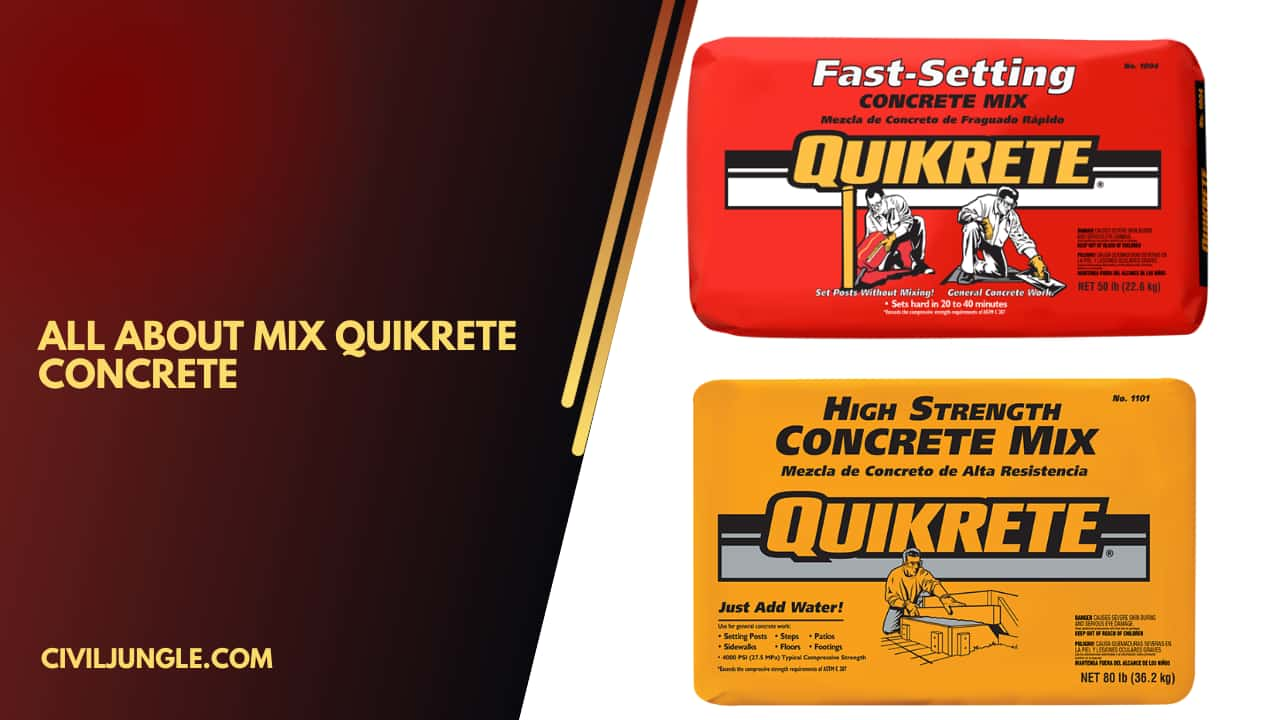
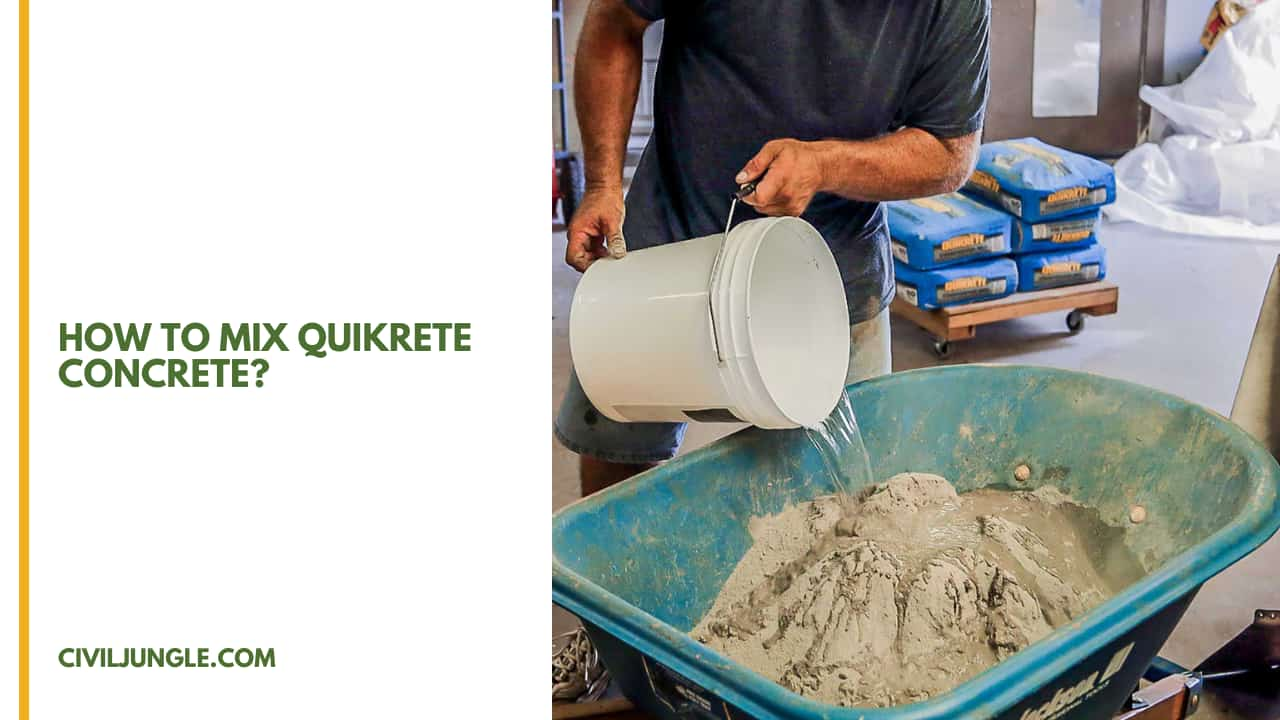
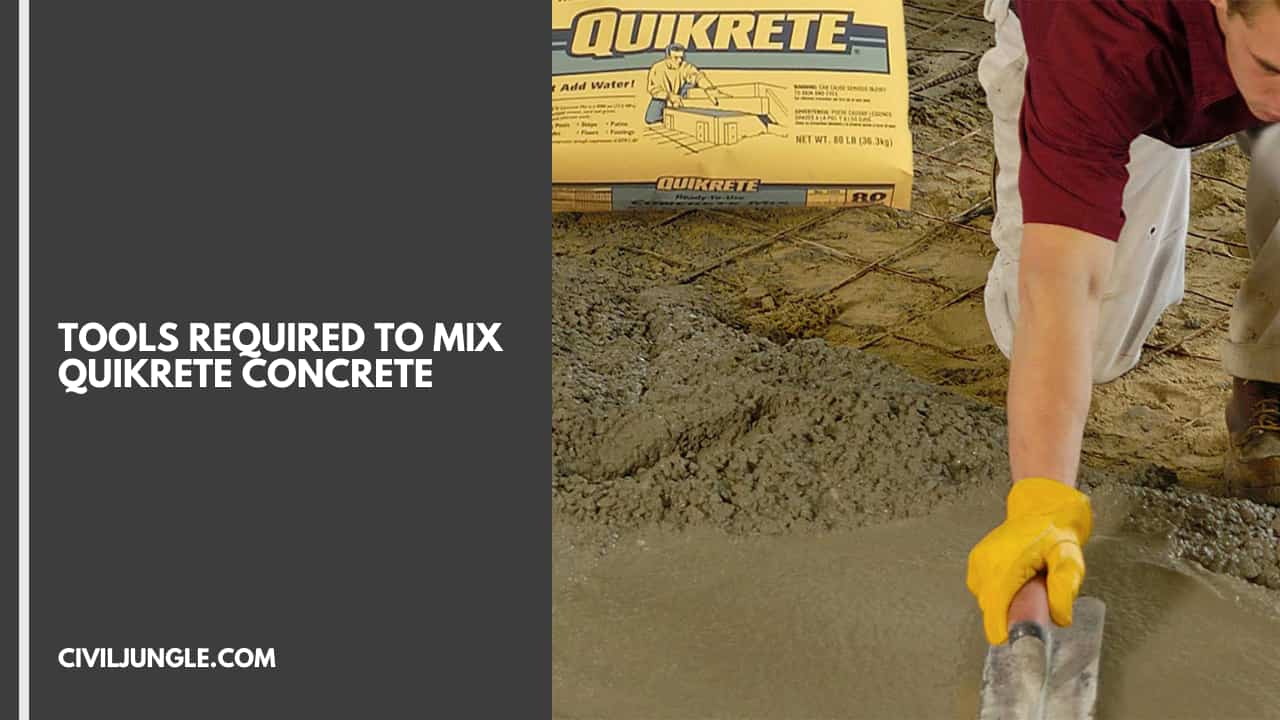

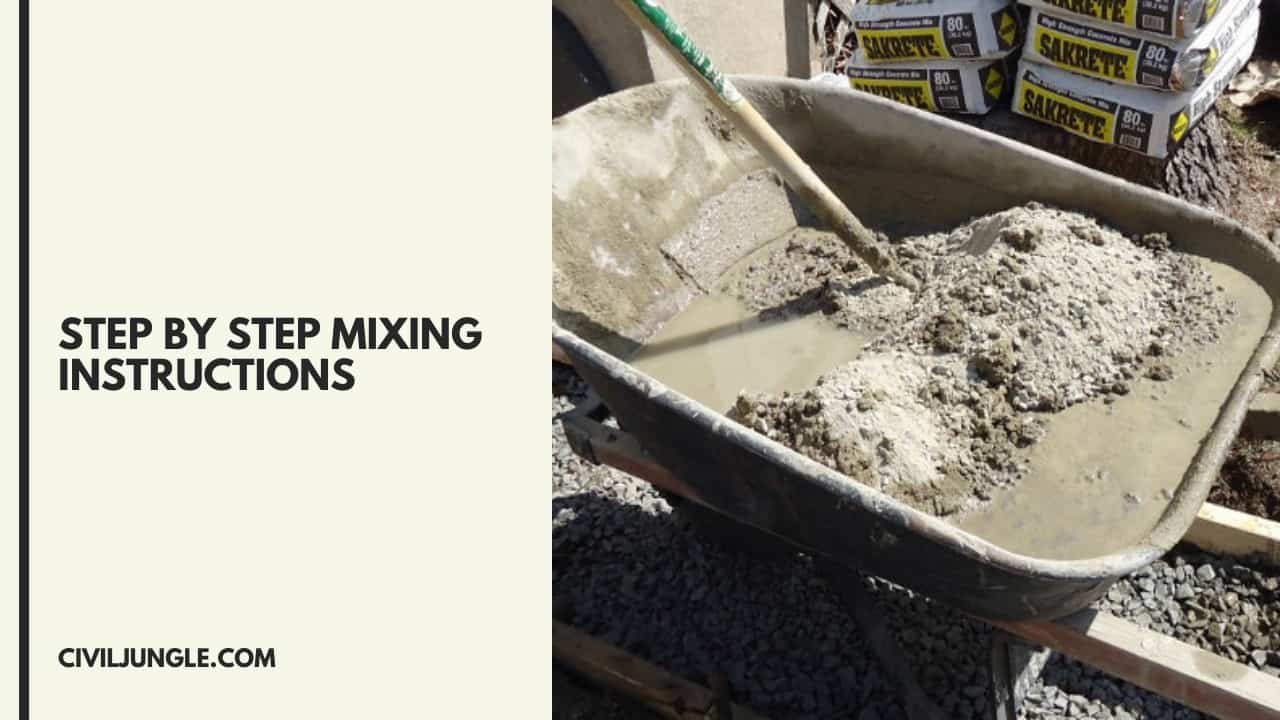
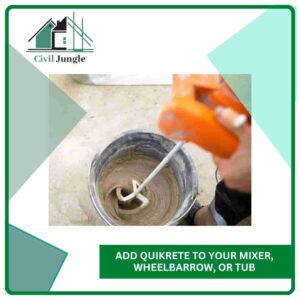

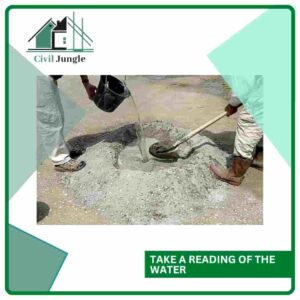
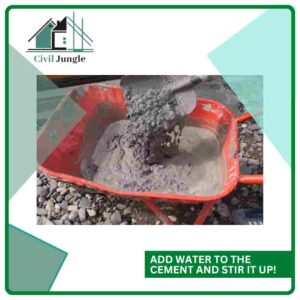
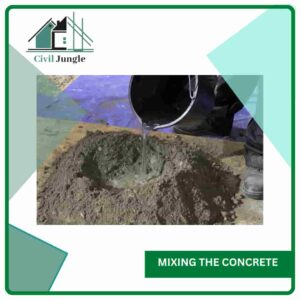

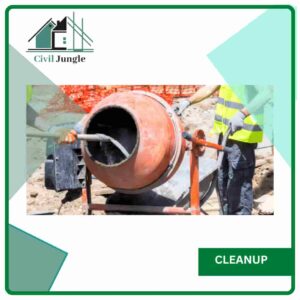

Leave a Reply